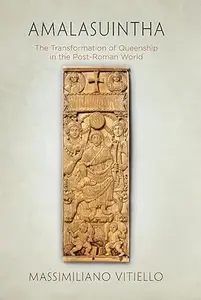
Free Download Massimiliano Vitiello, "Amalasuintha: The Transformation of Queenship in the Post-Roman World"
English | 2017 | pages: 312 | ISBN: 081224947X | PDF | 2,7 mb
In this book, Massimiliano Vitiello situates the life and career of the Ostrogothic queen Amalasuintha (c. 494/5-535), daughter of Theoderic the Great, in the context of the transitional time, after the fall of Rome, during which new dynastic regimes were experimenting with various forms of political legitimation. A member of the Gothic elite raised in the Romanized palace of Ravenna, Amalasuintha married her father's chosen successor and was set to become a traditional Gothic queen-a helpmate and advisor to her husband, the Visigothic prince Eutharic-with no formal political role of her own. But her early widowhood and the subsequent death of her father threw her into a position unprecedented in the Gothic world: a regent mother who assumed control of the government.
During her regency, Amalasuintha clashed with a conservative Gothic aristocracy who resisted her leadership, garnered support among her Roman and pro-Roman subjects, defended Italy from the ambitions of other kings, and negotiated the expansionistic designs of Justinian and Theodora. When her son died unexpectedly at a young age, she undertook her most dangerous political enterprise: forming an unmarried coregency with her cousin, Theodahad, whom she raised to the throne. His final betrayal would cost Amalasuintha her rule and her life.
Vitiello argues that Amalasuintha's story reveals a key phase in the transformation of queenship in late antiquity and the early Middle Ages, a time in which royal women slowly began exercising political power. Assessing the ancient sources for Amalasuintha's biography, Cassiodorus, Procopius, Gregory of Tours, and Jordanes, Vitiello demonstrates the ways in which her life and public image show the influence of late Roman and Byzantine imperial models on the formation of female political power in the post-Roman world.
